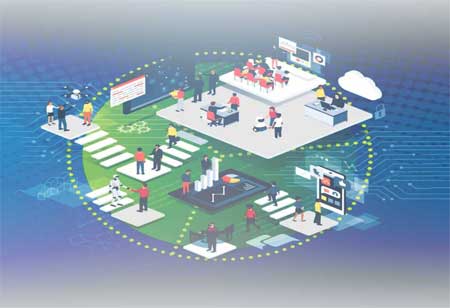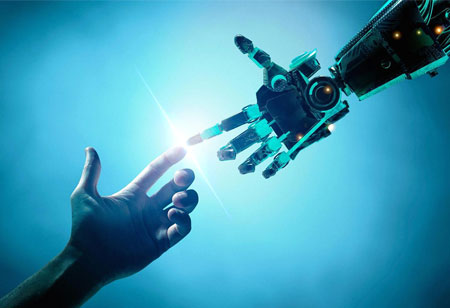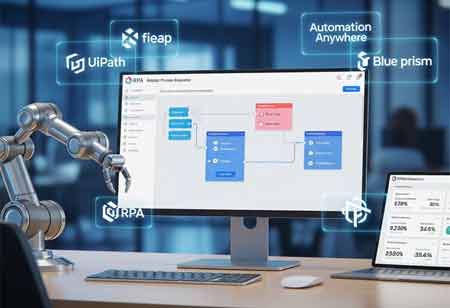THANK YOU FOR SUBSCRIBING
Top Robotics & Automation Trends and Innovations
Robotics is a specialised field of engineering that focuses on the design and creation of robots.

By
Apac CIOOutlook | Friday, September 01, 2023
Stay ahead of the industry with exclusive feature stories on the top companies, expert insights and the latest news delivered straight to your inbox. Subscribe today.
Robotics and automation are evolving with trends like collaborative robots and AI-driven automation, promising industry transformation, enhanced productivity, and a more efficient future.
FREMONT, CA: Robotics is a specialised field of engineering that focuses on the design and creation of robots. These robots are programmed to carry out tasks independently or with partial autonomy, providing significant benefits to businesses. This field encompasses the development, construction, and coding of intelligent robots aimed at tackling challenges across various operational and industrial sectors.
Sitting at the intersection of artificial intelligence, robotics forms a diverse field that presents ample opportunities for engagement with prominent companies both in India and globally. Aspiring professionals in robotics engineering have a broad scope ahead, ranging from applications in manufacturing facilities to advanced uses in industries such as healthcare, defence, and automotive. Due to their enhanced adaptability and versatility, robots have become an indispensable component of modern business operations.
Robotics Trends and Innovations Impact
Mobile Autonomous Robots
In demanding industrial environments, workers frequently encounter challenging conditions such as exposure to hazardous substances, confined spaces, and the operation of heavy machinery. In response to these challenges, startups and scaleups are increasingly adopting the use of autonomous mobile robots (AMRs) to revolutionise various manufacturing processes. By integrating sensors, artificial intelligence, and computer vision, these robots attain the ability to fully understand their surroundings and navigate autonomously.
Warehouse AMRs, equipped with advanced scanners, are proving to be invaluable for overseeing stock levels and coordinating material processing, thus effectively streamlining inventory management. Moreover, these robots excel in expediting operational processes by independently transporting sub-assemblies and components within factories, thereby reducing the need for manual labour in moving heavy loads.
Robots with Intelligence
Robots have seamlessly integrated artificial intelligence (AI) into their automated operations, enabling them to enhance tasks using real-time data. By utilising algorithms that encompass learning, dynamic modelling, reinforcement learning, and computer vision, emerging companies have leveraged AI to elevate the capabilities of robots. In industrial settings, AI-driven robots are taking on repetitive tasks such as 3D printing, component handling, and quality control assurance. Moreover, industries like hotels and retail stores are deploying robots equipped with natural language processing (NLP) to enrich their interactions with customers.
Robotics
Collaborative robots, often referred to as cobots, distinguish themselves from traditional industrial robots through their sophisticated sensors and algorithms, which ensure their safe interaction with humans. These robots are typically configured as end-of-arm tooling (EOAT), excelling in tasks such as assembly, including intricate activities like welding components and fastening bolts.
Cobots possess the ability to manage hazardous materials like metal and plastic, as well as handle heavy objects, all while prioritising the safety of human workers. A significant advantage is their smooth integration into operations, which minimises production downtime. They seamlessly complement existing production lines while assisting human workers.
Service-Based Robotics
The process of developing and maintaining robotic systems is both costly and time-consuming, which impedes their adoption among numerous businesses and small enterprises. However, the concept of Robotics-as-a-Service (RaaS) introduces a subscription-based business model centred around automation. Embracing this on-demand robotic approach empowers enterprises to swiftly adjust their operational capacities to match the constantly evolving market conditions.
Cybersecurity Robotics
The growing integration of the Internet of Things (IoT) and the increasing need for connectivity have exposed robotic systems to the risk of cyberattacks. Ensuring the protection of these robotic solutions from unauthorised access has become paramount, particularly as they find applications in sectors such as the military, industrial, healthcare, and space.
Implementing automated cybersecurity measures is essential for securing endpoints and communication channels, thus mitigating the risks of data breaches and operational disruptions. Many startups are adopting AI and machine learning strategies to consistently monitor networks and devices. These solutions empower companies to actively oversee device activities, promptly identify security vulnerabilities, and prevent potential financial setbacks.
Drones
Due to remarkable progress in edge computing, high-performance computing (HPC), and networking infrastructure, a novel wave of startups has arisen. These companies are focused on crafting drones endowed with amplified capabilities in both range and power. These drones are now finding applications across various industries for tasks such as package delivery, aerial data collection, equipment inspections, and more.
Within the agricultural sector, these innovative drones have assumed roles such as precise pesticide distribution, targeted seed placement, crop monitoring, and livestock tracking. Their versatility has accelerated their integration into critical aspects of last-mile transportation, including the delivery of necessities like groceries and medical supplies. Vertical take-off and landing (VTOL) technology has played a pivotal role in rendering these drones suitable for operations in confined spaces. This capability enables them to offer essential emergency services during periods of pandemics and natural disasters.
IoT (Internet of Things)
Robotics is centred around boosting productivity, facilitating interaction, and enabling independent actions. On the other hand, the Internet of Things (IoT) empowers functions like sensing, surveillance, and recording. The efficiency of interconnected robots heavily relies on the capabilities of edge computing systems. By collecting and transmitting data, these systems ensure the smooth operation of feedback-driven processes.
Recent advancements in edge IoT technology have empowered robot manufacturers to shift data processing closer to the source of the data. This advancement allows robotic systems to leverage almost instantaneous data, thereby enhancing task efficiency. Furthermore, the communication between machines (M2M) and between machines and humans (M2H) encourages a more effective collaboration between humans and robots.
Humanoid Robots
Emerging organisations are creating humanoid robots with a wide range of applications across various industries, including healthcare, education, entertainment, and hospitality. The prevalence of these humanoid machines has increased in the wake of the pandemic. They now undertake tasks such as contactless housekeeping and the delivery of items within hospitals.
These humanoid robots are particularly valuable for tasks involving inspection, maintenance, and recovery operations in hazardous situations within power facilities. This not only enhances operational safety but also protects human workers. Additionally, these robots are taking on roles such as hosting and greeting visitors at receptions, as well as providing companionship to the sick and elderly.
Similar to other categories of robots, humanoid robots are focused on automating tasks to improve efficiency and lower costs.
Automatically Piloted Vehicles
Automated guided vehicles (AGVs) play a pivotal role in the transportation of materials within warehouses, distribution centres, and manufacturing sites. These vehicles rely on a fusion of software programs and sensor-based navigation systems to oversee their movement along predetermined pathways. For instance, automated guided carts (AGCs) exhibit the capacity to transport a wide array of items, ranging from lightweight to heavy, whereas forklift AGVs adeptly manage packages without human intervention.
The efficiency of these robots results in substantial operational cost reductions and diminished reliance on human labour. Operators utilise software controls to regulate the acceleration and deceleration of AGVs, thereby mitigating the occurrence of accidents and elevating worker safety. AGVs are equipped with automatic bumpers designed to detect obstacles, providing an added layer of safety.
Assistive Robots
Individuals with diverse abilities derive significant benefits from the increased independence and improved quality of life offered by assistive robots. These robots employ sensors and intelligent algorithms to recognise, interpret, and engage with individuals. To support people with disabilities, seniors, or illnesses in their daily tasks, emerging companies are enhancing the cognitive decision-making capabilities of these machines, especially in activities of daily living (ADLs).
The field of robotics and automation is experiencing rapid evolution with noteworthy trends and innovations. From collaborative robots that enhance workplace efficiency to AI-driven automation that revolutionises industries, the landscape is undergoing substantial transformations. As technology continues to advance, the fusion of robotics and automation holds the potential to reshape industries, enhance productivity, and open up new possibilities for a more efficient and interconnected future.





